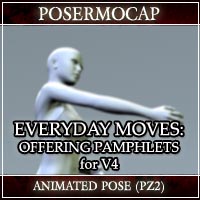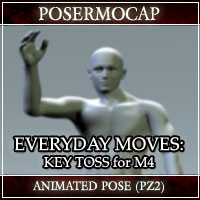When you are starting an animation in Poser or Daz|Studio, it is good to keep Average Shot Length (ASL) in mind. ASL has been dropping in since the start of film as editing techniques have become more advanced, allowing for more kinetic storytelling that draws the audience in to the story.
It’s amazing to see that the ASL in 1903 was 35.6 seconds and yet in 2009, it had dropped to 2.9 seconds. For years–from 1914 to 1985–the ASL tended to hover in the five to fifteen second range and then in 1986, the ASL started its steady drop to its present very short situation.
While it’s tough to generalize across movies as a whole, there are certain tips that can be gleaned from the ever-shortening ASL.
First, the greater the action on the screen, the shorter the shot length needs to be. In almost any action sequence, the shots last little more than a second in many cases, with longer shots allowing the audience a chance to catch their breaths along with the characters, before demanding all of their concentration for the next sequence of one-second cuts.
Second, even in slower-paced scenes, the camera rarely stays in one place for long–a conversation will have lots of shots of relatively short length cut together to allow the whole. Shots of the speaker will be intercut with reaction shots of the listener, and even wider shots showing the surroundings as they speak.
Third, use the very long shots for majestic moments where you want the audience to be filled with awe at the images on screen and where you want to give them a chance to see and appreciate every single detail. Seeing a giant starship as it crawls past the screen, a slow majestic flight across mist-shrouded hills, or even a slow camera move across the form of an attractive actor/actress are all meant to signal to the audience–hey, you should be impressed by this!
Setting the wrong shot length is also the second biggest mistake that many starting animators make.
The biggest is whipping the camera around the with no relation to real-world physics and trying to really show off the “3-D” nature of their scene–either that or putting so much jitter in recreating a hand-held shaky-cam look that you can’t see anything on screen. But that’s another topic.
We have all seen animations of fight scenes that look like the participants are involved in a real knock-down, drag-out battle, but because the shot length doesn’t match the intensity of the moment, the life gets sucked out of the fight. Instead, we’re treated to shots that last 30 seconds or more. It’s even worse if the camera remains static.
Exception to the rule: If the scene has its own pacing, and you are willing to continually shift the camera’s point of interest, then you can get away with a very long shot. Director John Woo, in his movie Hard Boiled had a continuous shot that followed the two heroes shooting their way through one corridor, getting in an elevator and having a short, intense conversation, and then getting out of the elevator to shoot their way through another hallway–the shot lasts a stunning two minutes and forty-two seconds and is an amazing piece of choreography. Likewise, Orson Welles opens his movie Touch of Evil in a continuous tracking shot lasting three and a half minutes where Welles seamlessly moves from one vignette to the next.
By keeping shot length in mind, you can affect your audience’s mood–shorter clips get the audience more excited, longer clips let them breathe, and really long clips let them appreciate what you’ve done.
 We’re pleased to show off a pose from our growing collection of motion-captured Everyday Moves. The move shows Daz3D’s Daz3d’s Victoria 4.2 figure offering pamphlets to passerby. This is an animated, motion-captured pose file for Daz3D’s Michael 4 figure and can be applied to her with a couple of clicks inside either Poser or Daz|Studio.
We’re pleased to show off a pose from our growing collection of motion-captured Everyday Moves. The move shows Daz3D’s Daz3d’s Victoria 4.2 figure offering pamphlets to passerby. This is an animated, motion-captured pose file for Daz3D’s Michael 4 figure and can be applied to her with a couple of clicks inside either Poser or Daz|Studio.